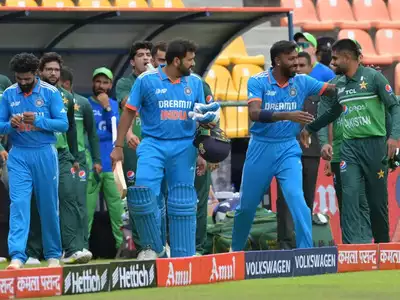
With India, Pakistan, and Bangladesh grouped together alongside New Zealand, the bragging rights for the subcontinent teams are at stake.
As the ICC Champions Trophy is back after an 8-year break, cricket fans worldwide are excited to see how the eight teams will compete for the title. The tournament will be held in Pakistan and Dubai from February 19 to March 9.
Starting with Group A, here’s an analysis of each team, looking at their strengths, weaknesses, opportunities, and challenges as they aim to lift the trophy.
INDIA
Strengths: India has a strong batting line-up with stars like Virat Kohli, Rohit Sharma, Shubman Gill, and Shreyas Iyer. Allrounders like Hardik Pandya and Axar Patel provide balance. The spin attack, including Kuldeep Yadav, Ravindra Jadeja, and Varun Chakravarthy, is also strong.
Weaknesses: The absence of Jasprit Bumrah due to injury is a big blow. The pace attack lacks experience, and Mohammed Shami will need to shoulder much of the responsibility. Rohit and Virat’s consistency is also a concern, though their recent performances give hope.
Opportunities: Shubman Gill and Shreyas Iyer can establish themselves as key players. Playing all their matches in Dubai gives India a “home advantage.”
Threats: Mohammed Shami, Kuldeep Yadav, and others are returning from injuries, which might affect their fitness. India has a history of struggling in the knockout stages of ICC tournaments.
PAKISTAN
Strengths: As the host team, Pakistan will benefit from home conditions and local support. Their fast bowling attack, led by Shaheen Shah Afridi, is very strong. Mohammad Rizwan and Salman Ali Agha are in good form, providing strength in the middle order.
Weaknesses: Babar Azam hasn’t been in great form recently, and Fakhar Zaman is working his way back into international cricket. Pakistan’s top-order batting has often struggled under pressure, and their fielding is not up to the mark.
Opportunities: Players like Salman Agha, Abrar Ahmed, and Kamran Ghulam can shine on the big stage.
Threats: Playing at home brings pressure, which could lead to stage fright. Having only one specialist spinner in Abrar Ahmed could be risky. Although Salman Agha and Khushdil Shah can bowl, they are part-timers.
NEW ZEALAND
Strengths: New Zealand is known for its consistency, with reliable players like Kane Williamson, Daryl Mitchell, and Tom Latham. Their bowling attack, with experienced pacers like Lockie Ferguson and Matt Henry, is balanced and includes good spinners. Their fielding is also top-class.
Weaknesses: While they are consistent, New Zealand lacks match-winners who can change the game on their own. They have also struggled with conceding runs in the death overs.
Opportunities: Young talents like Rachin Ravindra, Will O’Rourke, and Glenn Phillips have the chance to impress. The pitches in Pakistan and the UAE could suit their spinners.
Threats: New Zealand has often faced challenges in high-pressure knockout matches, which could be an issue again. The team’s depth will be tested if senior players don’t perform well.
BANGLADESH
Strengths: Bangladesh has veterans like Mushfiqur Rahim and Mahmudullah, who form the backbone of the team. Their spinners are a key strength, especially in subcontinental conditions, which will be helpful in Pakistan and Dubai.
Weaknesses: Bangladesh struggles with consistency, and their batting often collapses, making it hard to chase totals or capitalize on good starts. Their pace attack also struggles on flat tracks, and they lack power hitters in the lower middle order.
Opportunities: Young talents like Tanzid Hasan, Towhid Hridoy, and fast bowler Nahid Rana can surprise everyone with their performances.
Threats: The absence of Shakib Al Hasan weakens both the spin department and the middle order. Bangladesh recently lost ODIs to Afghanistan and West Indies, showing issues with form and consistency among key players.
